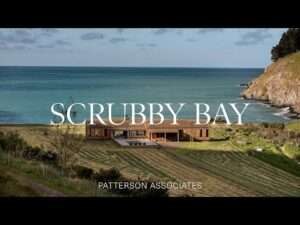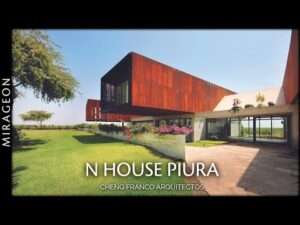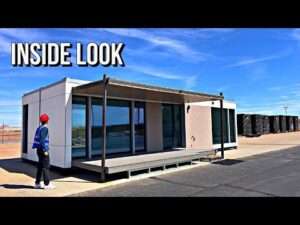Architecture and Design Obsession
TasWeekend: Home is where the art is
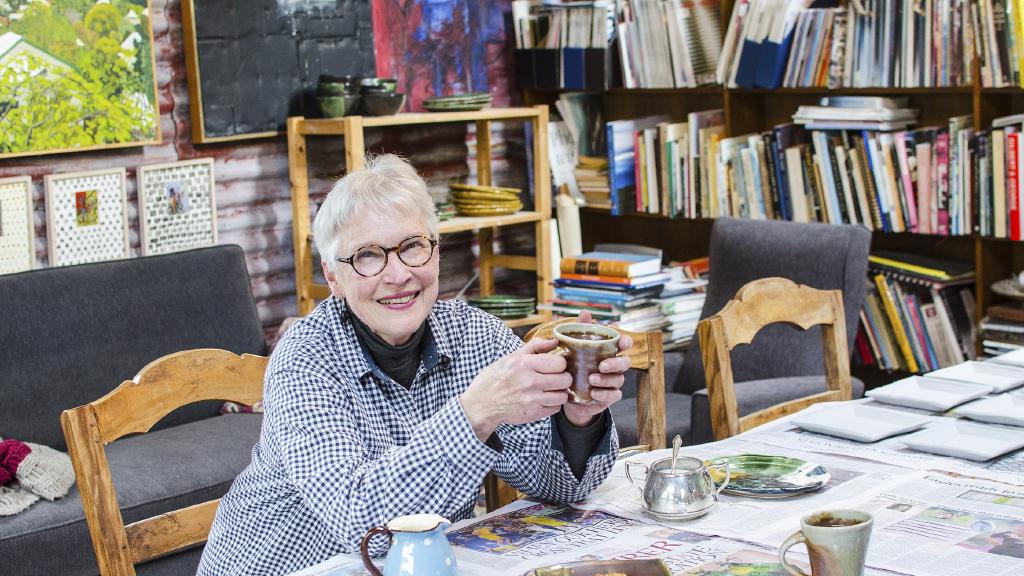
Bronwyn Theobald in her shed studio, with coffee mugs by her favourite potter Ben Richardson and surrounded any artworks by relatives and former students. Pictures:
POTTER and printmaker Bronwyn Theobald’s 1870s house in Geeveston, south of Hobart, has proved the perfect place to prepare for the artist’s current exhibition of work inspired by history.
She has spent much of her time here over the past year reading the 19th century French explorer Nicholas Baudin’s journal in preparation for a show based on the explorer’s Tasmanian expeditions, with her daughter, painter Stephanie Theobald.
Baudin writes in his journal about swans, cockatoos, noisy miners, oyster catchers and the little fish now known as the critically endangered Spotted Handfish.
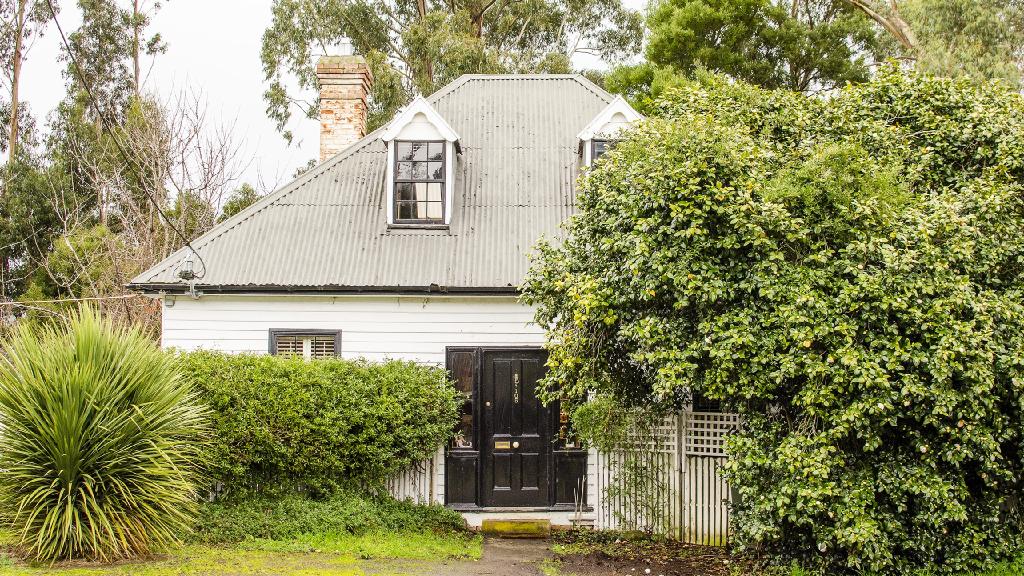
Bronwyn Theobald’s 1870s weatherboard cottage.
“I was engrossed by the story that was emerging about this expedition, and so the creatures described became the subject of linocuts, printed onto the clay of the dinnerware I made, and glazed with transparent ambers, blues and greens reminiscent of the sands, skies and sea that Baudin wrote about,” the artist says.
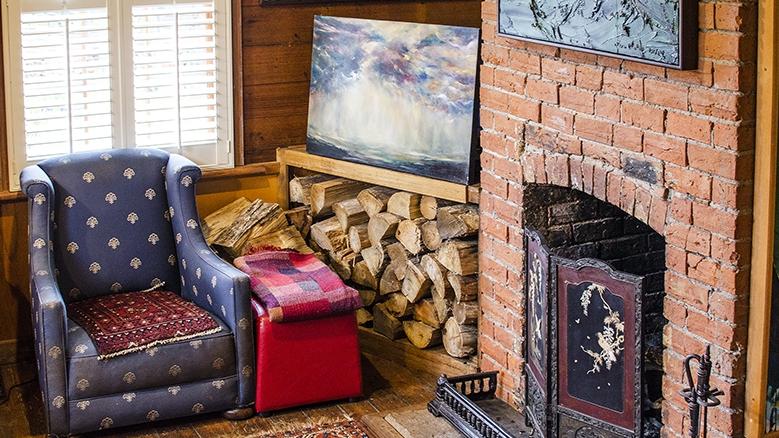
The cosy lounge area is filled with artworks including a painting by Georgina Richmond.
Bronwyn’s main creative space is her backyard studio, but her home likewise testifies to her creative endeavours.
She bought the timber house with her lawyer husband Phil in the southern outpost of Geeveston — increasingly a haven for creatives — in the early 2000s.
“Things were much more affordable then. We were living in Brisbane at the time and just wanted somewhere for holidays; a place where you could come and read or write or make art,” Bronwyn says.
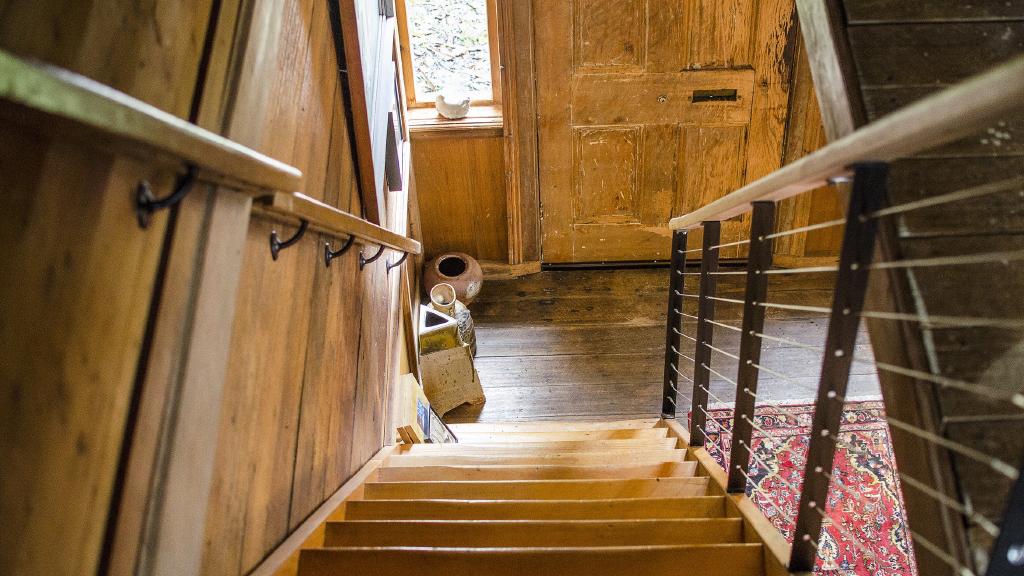
The house is remarkably intact, having largely avoided updates throughout its life.
Two internal walls have been removed to open up the space, but the double fireplace remains to demarcate the lounge and dining rooms.
A chipped and cracked sandstone hearth points to at least one attempt made at renovation.
As Bronwyn explains, “We bought the house from the Dowell-Hentalls. Peta was formerly the deputy director of TMAG, and she obviously had good ideas about preserving the place.”
A new kitchen has brought the facilities up to date, but rough-sawn timber benches ensure the mod cons recede into the background. The walls are painted a deep red called War Dance.
“We love this colour. We’ve used it in every house we’ve lived in for more than 50 years. It doesn’t show up marks, which is great for me because I’m not a particularly proud housekeeper,” Bronwyn says.
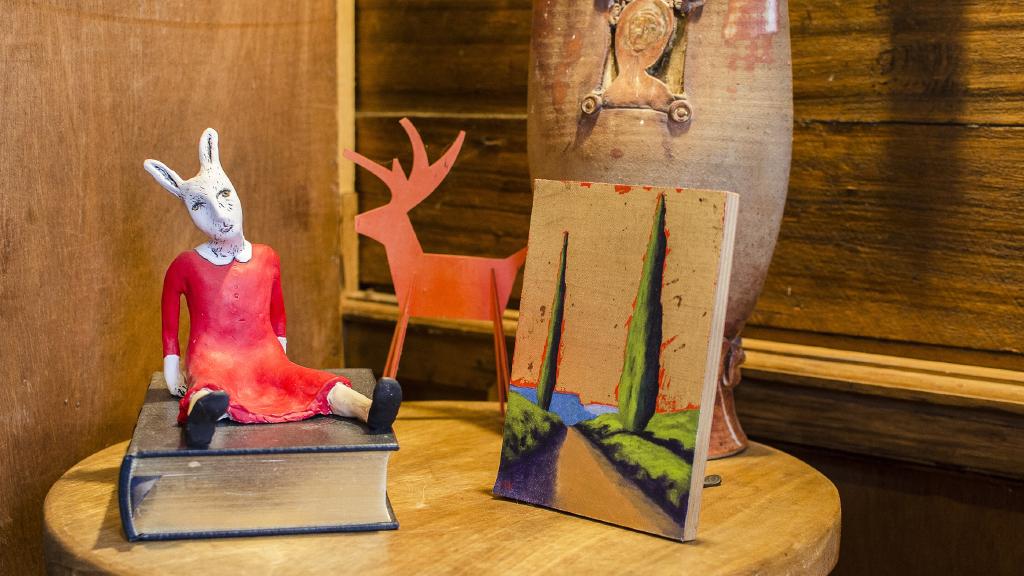
A display of small artworks in the lounge.
But she is a gallerist in her own home, with artworks adorning all available space — and a story to go with every one.
Phil keeps an office out back in a separate timber building, and Bronwyn’s studio has its own wood fire and indoor-outdoor dining setting on a floor of crushed stone.
“When we bought the place we didn’t even think about the sheds,” Bronwyn says. “They were full of plastic and chipboard and junk.”
It’s here, in her studio, that Bronwyn has worked on her new exhibition, which will contrast Stephanie’s paintings with her printed and glazed tableware.
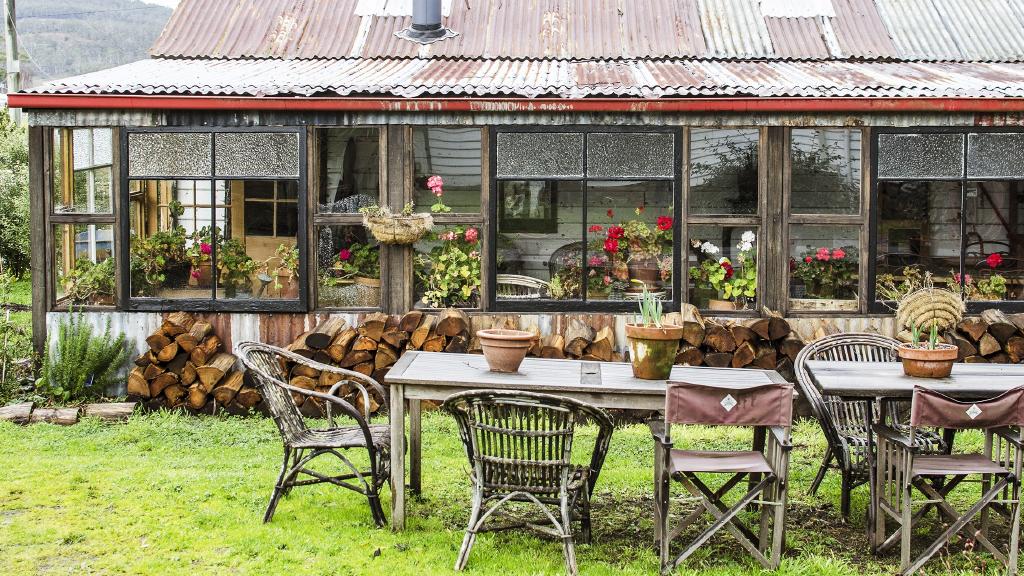
Potter and printmaker Bronwyn Theobald’s 1870s house in Geeveston. The former mechanic’s shed, now studio with salvaged windows and corrugated iron.
As Bronwyn explains, the idea was sparked by exhibitions Stephanie had seen in London.
“They included some artworks from Australia; they made her feel connected to home,” she says. “Then last year I saw the same exhibition at the Tasmanian Museum and Art Gallery, which celebrated the work of the artists who accompanied the French explorer Nicholas Baudin during his 1800-04 expedition to Australia. I was so fascinated by this exhibition that I bought Christine Cornell’s English translation of Baudin’s Journal.”
The journal provided a wealth of information and intriguing historical details.
“It’s amazing to think that they took live specimens all the [way] back to France for Josephine’s garden — you know, Napoleon’s missus,” she says.
“They brought back emus; Josephine was particularly enamoured with them because they were so exotic to her. And swans … incredibly they got them back to France on a diet of red wine and rice.”
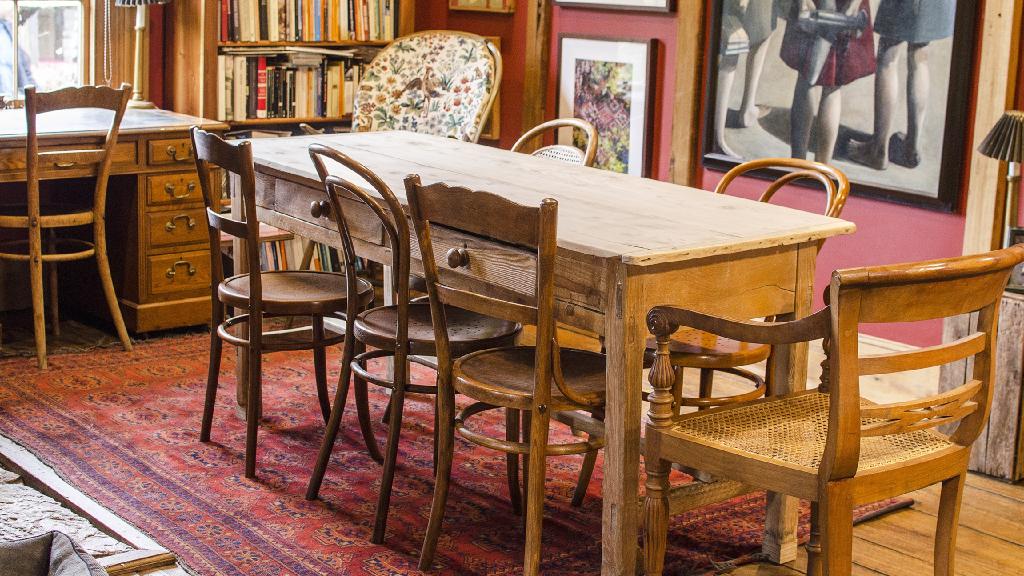
The dining room, also adorned with artworks of different sizes and styles.
The curious will find further artistic detail on the underside of each of Bronwyn’s plates.
“My mother used to say, ‘Don’t look under your plate.’ But I think, if you don’t look you’re not going to see. She also warned me, ‘Art changes people.’ What a good thing.”
Stephanie and Bronwyn Theobald’s exhibition, Reclaimed: Objects and Images from Home, is at Sidespace Gallery, Salamanca Arts Centre, 77 Salamanca Pl until Wednesday
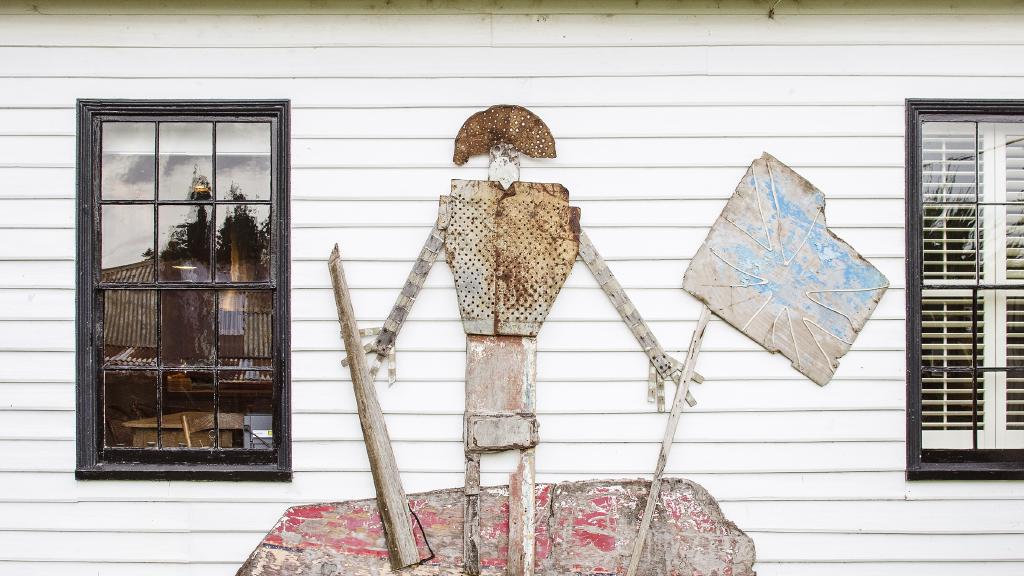
Tom Risley’s Jimmy Cook, which Bronwyn and Phil bought in Brisbane in 1988, adorns the south-facing cottage wall.
